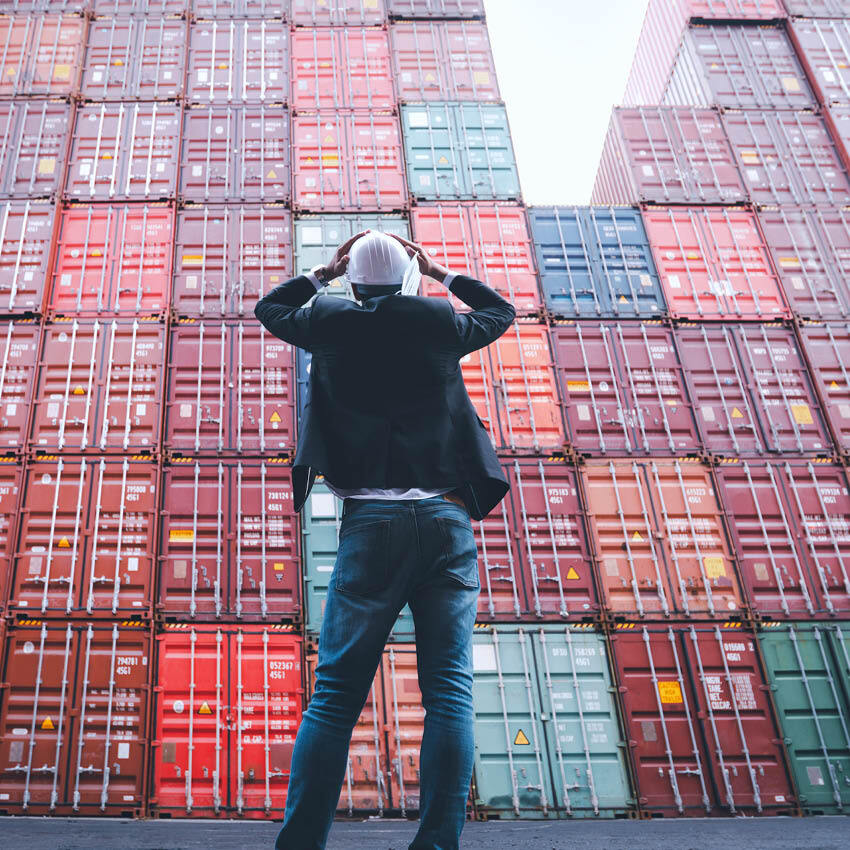Predictions about the end of worldwide pandemic conditions – and their impact on global supply chain logistics – have been ridiculously wrong. Every time “the experts” thought the worst was over and things would start to calm down again they’ve turned out to be incredibly incorrect.
Under the heading of be-careful-what-you-wish-for, spending on stuff remains strong even if the rate of growth has slowed down. Unless 330 million Americans wake up next Tuesday and say they’re done, it doesn’t appear that consumption rates are going to fall off the face of the earth.
So, to everyone who was saying 2022 would see a return to more normal shipping times – and costs – perhaps it’s time to rethink that premise. Of course, the recent spike in Omicron Covid cases means all bets are off on more normal conditions, but several other factors are coming into play that suggest – strongly suggest – that this is going to be another painful year when it comes to getting goods from Asia, especially China.
Zero Tolerance Means Zero Shipments
For Americans debating mask mandates or closing a local school for a few days, there’s no way to comprehend what’s going on in China. The country has adapted a zero-tolerance policy which means that if someone sneezes the wrong way, entire ports, cities and even regions can be totally shut down immediately for an indeterminate period of time.
This is what we most recently saw in the city of Xi’an, in north central China where 13 million people – that’s the population of New York, Chicago and Houston combined – were sent home, factories and stores shut down and anyone seen on the streets was arrested…or worse. Xi’an may not be a major manufacturing center for many exports but it’s not just the only city or region going through this. And it shows the Chinese government’s determination to stop any pandemic conditions from getting out of hand.
Given this policy, it’s easy to see how other more export-centric parts of China could go through the same thing over the course of 2022. Omicron may be starting to peak and even subside in some regions, but sadly there are many more letters in the Greek alphabet to go.
Rolling Power Shutdowns Will Not Keep Things Rolling
Getting the definitive truth out of a country like China on its ongoing power shortages is pretty tricky, so from the outside it’s quite difficult to know exactly what is going on.
But there’s no question that power throughout the country is being controlled and monitored, resulting in blackouts, brownouts, and out-and-out shutdowns in what appears to be a random, difficult-to-anticipate pattern. Throw in possible additional shutdowns due to the nation trying to control pollution ahead of the Olympic games next month, and it becomes whatever the Chinese phrase for “hot mess” is. With oil prices continuing to rise from pandemic lows and demand increasing as the world starts to travel again, these power outages in China are not likely to go away anytime soon. Unplugged never was supposed to mean unpowered.
Happy New Year, Happy Olympics
If you have your calendar out – and can still mark things off, old school – put a whole series of big black Xs on it starting February 1, double Xs on February 4 and then little Xs for the following two or three weeks.
That’s the double whammy of first, Chinese Lunar New Year and then the start of the Winter Olympics in Beijing, followed by another 16 days of the games. And then who-knows-how-long after the New Year’s Covid aftershock before the Chinese factories, ports and logistics systems start to get back up to speed.
The global supply chain has adjusted to the New Year’s holiday, and even if travel within China has declined during this period, it’s still pretty substantial, involving hundreds of millions of workers. Importers have developed workarounds over the past few decades, but they are being severely tested by the pandemic conditions and the delays in year-round shipping patterns. Now the Olympics are throwing another snow blower into the mix. Whatever happens in terms of international participation, politics, and local attendance, it’s another distraction for companies trying to get goods loaded onto container ships.
Demand Remains…Demanding
Nobody can really say what it would take to fix this supply chain mess, but it is largely agreed that inevitably reduced demand would even things out. That process would start when government stimuli ended, consumers started to spend money on services rather than goods again and the economy generally cooled down.
We’re still waiting for that to happen. Under the heading of be-careful-what-you-wish-for, spending on stuff remains strong even if the rate of growth has slowed down. Unless 330 million Americans wake up next Tuesday and say they’re done, it doesn’t appear that consumption rates are going to fall off the face of the earth. Combine that with any of the supply chain remedies that are being bandied about – longer operating hours at ports, more container ships entering service, hiring more truck drivers, alternative sourcing in North America and elsewhere – as unrealistic factors in the next year and you have a demand curve that remains very much status quo.
So, what’s an importer to do? The buy-early/buy-often strategy seems to remain a good choice. So does spending whatever it takes — air freight, chartered ships, alternative ports, extra “contributions” to foreign governments, freight handlers and shipping companies – to get reliable deliveries. They say good things come to those who wait. Right now, most American retailers and importers would settle for any things – good or bad — if they don’t have to wait.




